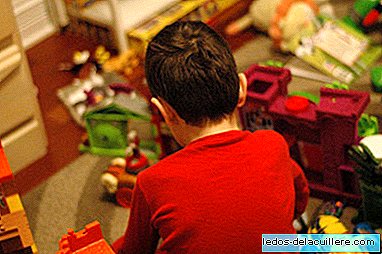As a result of the shootings in several schools in Florida, in the United States they have begun to use therapeutic dogs to offer comfort and support to the students at the time of returning to classes. Science has shown that therapeutic dogs can reduce stress and make people feel more united in difficult situations.
Given the impact of therapeutic dogs on the welfare of students, schools and universities increasingly have therapeutic dog programs as an affordable way to provide social and emotional support to students.
What are therapeutic dogs?
It is important to make clear that therapeutic dogs are not guide dogs. A guide dog is a guide dog that focuses exclusively on its owner and has been specifically trained to support people with visual or hearing disabilities, seizure disorders, mobility problems or diabetes.
The role of therapeutic dogs is to react and respond to people and their environment under the direction and guidance of their owner. For example, a person may be encouraged to pet the dog or even talk to him to get in touch and relax.

Therapeutic dogs can also be used as part of zootherapy where the goal is to improve the social, cognitive and emotional abilities of a person. A health professional who uses a dog for therapeutic purposes may be less intimidating, something that could improve the relationship between the patient and the doctor.
Zootherapy is a field that includes many different ways of using animals to help people. An example is the facilitation of health and emotional or physical well-being through therapies with pets or the use of therapeutic dogs. These activities do not have to be supervised by a professional nor are they exclusive of psychological interventions.
Science suggests that the use of therapeutic dogs to treat traumatic experiences can also help reduce symptoms of depression, post-traumatic stress disorder and anxiety.
What happens at a psychological level in people who use therapeutic dogs?
The emotional bond between humans and animals
The emotional bond between humans and animals can have positive effects for people and animals. Research shows us that therapeutic dogs can reduce stress at the physiological level (cortisol levels) and increase the feelings of attachment that activate oxytocin: a hormone that increases the feeling of trust in people.
Dogs also react positively to activities related to zootherapy. In response to the emotional bond between humans and animals, dogs produce oxytocin and lower their cortisol levels when they connect with their owner. Dogs often feel the same when they do zootherapy activities than when they are at home, depending on the environmental context.
The benefits of therapeutic dogs
Zootherapy can:
Develop empathy and appropriate interpersonal skills
Help people develop social skills
Transmitting tranquility and the presence of animals can make an affinity between doctors and patients more quickly established, as well as
improve personal skills to understand the social norms necessary in human relationships. Doctors can process that information and use it to help their patients understand how their behavior can affect other people.
 The emotional bond between animals and humans can bring many benefits for people and animals. Ohio University Libraries / Flickr, CC BY-NC-ND
The emotional bond between animals and humans can bring many benefits for people and animals. Ohio University Libraries / Flickr, CC BY-NC-ND
Lately, therapeutic dogs are being used in programs to improve student and student participation in colleges and universities.
The benefits of therapeutic dogs in schools
A recent report highlighted that children who have contact with therapeutic dogs were more motivated when learning and obtained better academic results.
Therapeutic dogs are being used to help children with social and emotional learning needs, something that can help them in the literacy process.
Studies on the effects of therapeutic dogs in schools show several types of benefits, including:
more class attendance
more self-confidence
lower levels of anxiety that in turn translate into better academic results, such as better reading and writing levels
positive changes in learning and more motivation, as well as
Better relationships with peers and professions thanks to having experienced the trust and unconditional love of a therapeutic dog. In turn, it also helps students understand how to express their feelings and develop more trustful relationships.
Although these benefits are well known, many schools choose not to have therapeutic dog programs due to the supposed risks. These risks range from fears about hygiene or about the temperament of dogs when working with children. However, therapeutic dogs and their owners are selected very carefully and undergo strict testing before they can be accepted in any of these programs.
The main reason for the lack of acceptance has been associated with little research on the benefits of using therapeutic dogs in schools.
The benefits of therapeutic dogs in college
Researchers have discovered that university students had much less stress and anxiety, as well as more happiness and energy, immediately after spending time in a tutoring where a dog was present when compared to a student control group that They hadn't spent time with a therapeutic dog.
Generally, therapeutic dog programs are based on volunteer organizations. An example is the Australian Story Dogs association that currently has 323 volunteer dog teams in 185 schools across Australia and a total of 1,615 children each week.
More research is needed on these programs to be able to understand more fully the impacts of therapeutic dogs, especially in the academic results of the students. The lack of funding is delaying research and collaborations with universities are a good solution to the problem.
Authors: Christine Grove, Educational psychologist and professor, Monash University, and Linda Henderson, Full Professor, Monash University.
This article has originally been published in The Conversation. You can read the original article here. * * Translated by Silvestre Urbón.
Photos | Pioneer Library System / Flickr, CC BY-NC-ND In Babies and more | When dogs help children read, why it is good for children to have dogs and cats at home












